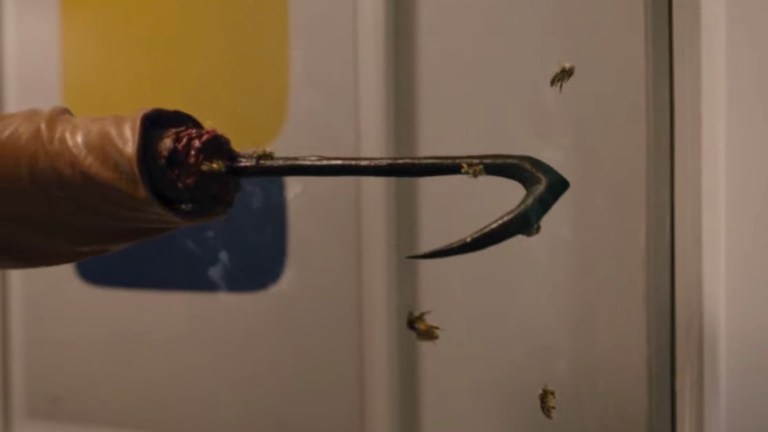Candyman Origins Explored in Haunting Video from Nia DaCosta
Candyman reboot director Nia DaCosta shares a new creepy puppet teaser about the lore of Candyman, and “the intersection of white violence and black pain.”

In another timeline, we would’ve already feasted our eyes on Nia DaCosta and Jordan Peele’s Candyman, the semi-reboot/semi-sequel of a ‘90s cult classic. But while the movie (like much else) was delayed by the coronavirus pandemic, DaCosta is not letting Candyman’s legend be forgotten. Indeed, the director of this new vision of Cabrini-Green’s boogeyman took to Twitter to share a provocative and appropriately heartbreaking puppeteer video that lays bare the racial horrors bubbling beneath the surface of the Candyman myth… and our daily lives.
“CANDYMAN, at the intersection of white violence and black pain, is about unwilling martyrs,” DaCosta wrote. “The people they were, the symbols we turn them into, the monsters we are told they must have been.”
It’s an apt analysis of the Candyman story, and when presented in shadow puppet vignette, it’s downright haunting. In the video, we see in a way far more explicit than Bernard Rose’s original ’92 movie that there is a clear straight line to be drawn between the origin story of Candyman and the day-to-day violence we see against Black bodies in the U.S. Among the images glimpsed are a group of police officers, and a pair of nightsticks; a new Black homeowner, and the lynch mob of white neighbors who respond by dragging him in chains behind their truck; a young Black child on a bicycle, and the electric chair used by those who would wrongfully accuse him.
All of these images are part of the pastiche of centuries of American life, and they’re apparently all in the works of art painted by the new Candyman in DaCosta’s film. They’re each based on very familiar stories, but in this context they underscore the true insidiousness of Candyman’s origin, which is also told in the montage. Everything is present: the white woman he loved, the portrait he painted of her, and the angry father who’s rage leads to a Black man losing a hand and being fed to a hive of bees.
This is very much the origin as told in the ’92 film. Loosely drawing from Clive Barker’s short story, “The Forbidden,” writer-director Bernard Rose transplanted a tale set in the UK to Chicago and added new dimension by making Candyman an African American who loved and impregnated a white woman from a wealthy family. He wasn’t a monster; he was a painter and artist who had his literal “hook for a hand” thrust onto him by a lynch mob. His monstrousness was created by the racism that took his life and the unjustified bigotry that filled him with rage.
DaCosta captures this alongside Manuel Cinema’s beautiful puppeteering and a modern reworking of Phillip Glass’ sweetly fatalistic score. Also like Glass’ music, this isn’t trying to shock you; it draws you into fully seeing the relentless cycle of violence, and it does so with a strange funereal beauty. Rose hinted at these themes, but DaCosta clearly plans to unpack them, along with a script co-written by her, Peele, and Win Rosenfeld.
Candyman was turned into a monster by racial injustice and horrific brutality; and he’s remembered still in a way that menaces Black communities—at least until they’re gentrified into white communities. It is possible to imagine the implications of that will be more thoroughly unpacked by a Candyman that appears ready to mirror our 2020 realities.
“What we do in our film is talk about the ghosts that are left behind because of gentrification,” DaCosta said at a press event Den of Geek attended earlier in the year. “In the original film, they’re already talking about the new buildings that are built, and the way that apartments are built, and moving between mirrors and apartments—how crime was able to happen because of how poorly those buildings were made versus the high-rises they made for the middle class.”
It appears to also be how stories and histories are weaponized between those economic classes, and the still visible racial barriers within them.
Candyman will continue his bloody story when the new movie opens on Sept. 25.
